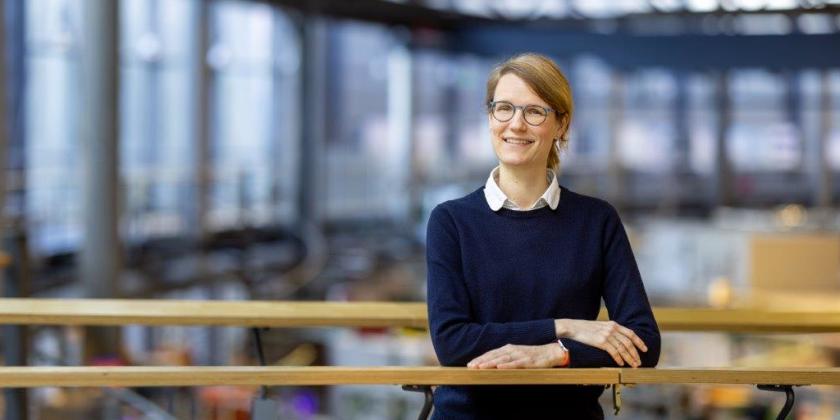TU Berlin appoints Renske van der Veen as professor

Dr. Renske van der Veen investigates catalytic processes at BESSY II, which are crucial for the production of green hydrogen, among other things. © M: Setzpfandt/HZB
For the past two years, Dr Renske van der Veen has led a research group in time-resolved X-ray spectroscopy and electron microscopy at HZB. Her research focuses on catalytic processes that enable, for example, the production of green hydrogen. She has now been appointed to a S-W2 professorship at the Institute of Optics and Atomic Physics (IOAP) at the Technische Universität Berlin.
Dr Renske van der Veen specialises in ultrafast X-ray methods, which she uses at BESSY II to study the fast processes involved in catalysis. Van der Veen is also contributing her expertise to the scientific requirements profile for the successor X-ray source BESSY III.
Renske van der Veen studied at the ETH Zurich and completed her PhD at the École Polytechnique Fédérale de Lausanne (EPFL). She went on to do research at the California Institute of Technology, the Max Planck Institute for Biophysical Chemistry in Göttingen and the University of Illinois, where she was also an assistant professor. She has received the Alexander von Humboldt Foundation's Sofja Kovalevskaja Award and the Packard Fellowship for Science and Engineering.
arö
https://www.helmholtz-berlin.de/pubbin/news_seite?nid=24648;sprache=en
- Copy link
-
Dr. Michelle Browne receives Daimler and Benz Foundation Fellowship
Michelle Browne heads a Helmholtz Young Investigators Group on electrocatalysis at HZB. She has now been selected as a fellow of the Daimler and Benz Foundation. She will receive 40,000 euros over the next two years and, in addition, access to an excellent research network.
-
HZB-postdoc Feng Liang becomes associate Professor at Xi'an Jiaotong University
Dr. Feng Liang has joined the HZB Institute Solar Fuels in 2021. Now, he has secured an associate professorship at the Green Hydrogen Innovation Center in the Department of Mechanical Engineering, Xi'an Jiaotong University, China. He will start to build up his research team in June 2025.
-
Innovative battery electrode made from tin foam
Metal-based electrodes in lithium-ion batteries promise significantly higher capacities than conventional graphite electrodes. Unfortunately, they degrade due to mechanical stress during charging and discharging cycles. A team at HZB has now shown that a highly porous tin foam is much better at absorbing mechanical stress during charging cycles. This makes tin foam an interesting material for lithium batteries.
